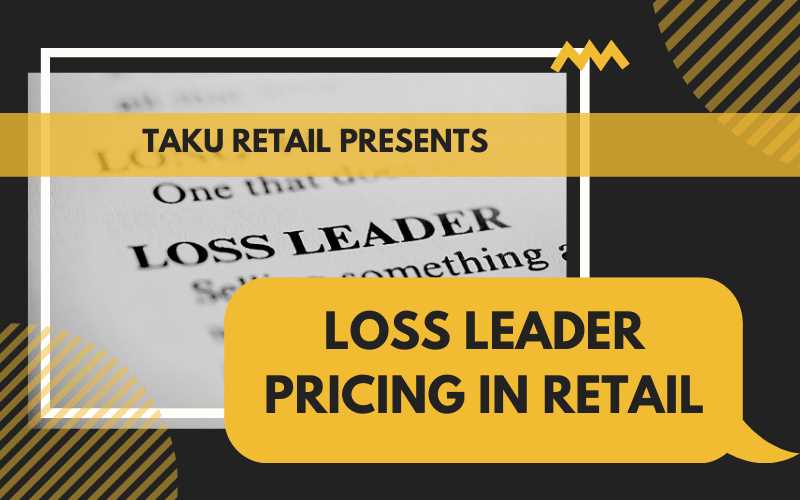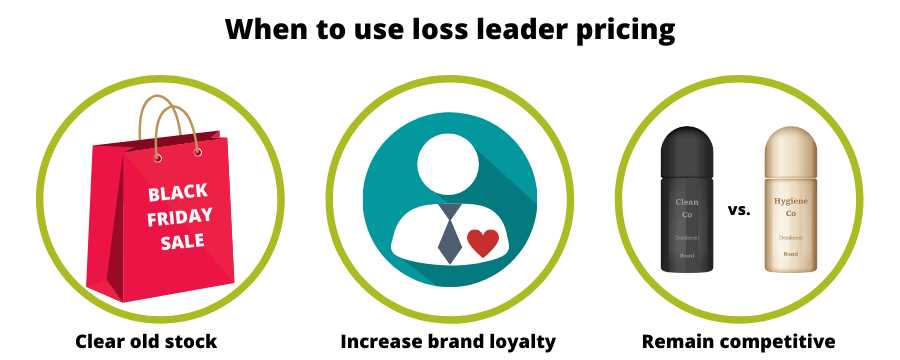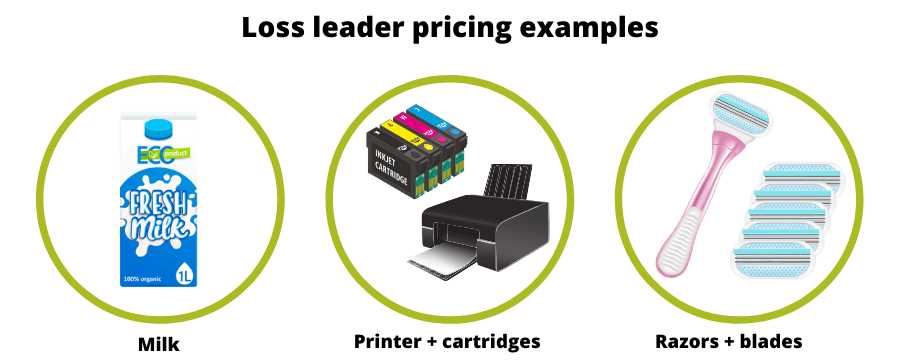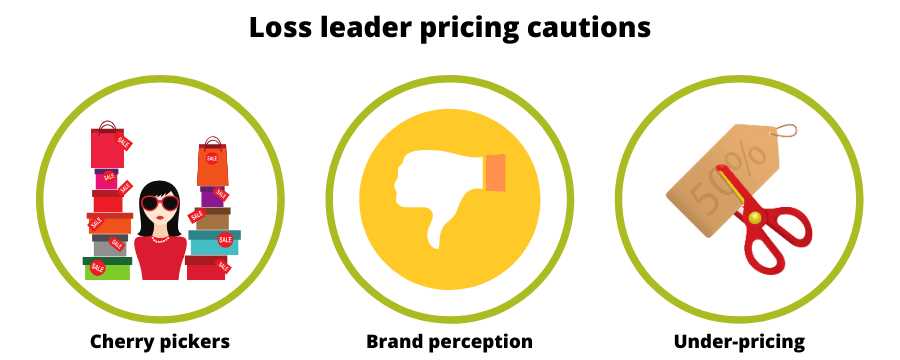What is a Loss Leader Strategy?
A loss leader strategy is a pricing technique used by retailers to attract customers by offering a product or service at a price lower than its cost. The purpose of this strategy is to entice customers to enter the store or website, with the expectation that they will also purchase other higher-margin products or services.
Definition and Explanation

A loss leader is a product or service that is deliberately sold at a loss to attract customers. The retailer takes a hit on the profit margin of the loss leader item, but makes up for it by selling other products or services at a higher price. The idea is that customers who come in for the discounted item will be tempted to buy additional items, thus increasing the overall revenue and profitability for the retailer.
The loss leader strategy is based on the concept of customer psychology. By offering a highly attractive deal, retailers can create a sense of urgency and excitement among customers, encouraging them to make a purchase. Once inside the store or on the website, customers are more likely to explore other products or services and make additional purchases.
Benefits of Using a Loss Leader Strategy
There are several benefits to using a loss leader strategy:
- Increased foot traffic: By offering a highly discounted product or service, retailers can attract a large number of customers to their store or website.
- Increased sales: Once customers are inside the store or on the website, they are more likely to make additional purchases, increasing the overall sales volume.
- Customer acquisition: The loss leader strategy can help retailers attract new customers who may not have otherwise visited their store or website.
- Brand awareness: Offering a highly attractive deal can generate buzz and increase brand visibility, leading to long-term brand recognition and customer loyalty.
- Competitive advantage: By offering lower prices on certain products or services, retailers can gain a competitive edge over their competitors.
Overall, the loss leader strategy can be an effective marketing tool for retailers to attract customers, increase sales, and build brand loyalty.
Definition and Explanation
The loss leader strategy is a pricing strategy used by retailers to attract customers by offering a product or service at a price lower than its cost. The purpose of this strategy is to entice customers to enter the store or visit the website, with the hope that they will make additional purchases of other products or services that have higher profit margins.
When implementing a loss leader strategy, retailers intentionally sell certain items at a loss in order to generate customer traffic and increase overall sales volume. The loss incurred on the discounted item is offset by the profits made on the additional items purchased by customers.
This strategy is commonly used in the retail industry, especially in supermarkets, department stores, and online marketplaces. It is often employed to promote new products, clear out excess inventory, or gain a competitive advantage by offering lower prices than competitors.
By offering a product or service at a price lower than its cost, retailers can create a sense of value and attract price-sensitive customers. This can lead to increased customer loyalty and repeat business, as well as positive word-of-mouth referrals.
However, it is important for retailers to carefully analyze the potential risks and benefits of implementing a loss leader strategy. While it can be an effective marketing tool, it can also lead to financial losses if not executed properly. Retailers must ensure that the loss incurred on the discounted item is offset by the profits made on additional sales, and that the strategy aligns with their overall business goals and objectives.
Benefits of Using a Loss Leader Strategy

A loss leader strategy can offer several benefits to retailers. Here are some key advantages:
1. Attracting Customers
By offering a highly discounted or even free product as a loss leader, retailers can attract a large number of customers to their stores or websites. The low price or enticing offer serves as a strong incentive for potential customers to engage with the retailer and explore other products or services.
2. Increasing Sales

Once customers are attracted by the loss leader, they are more likely to make additional purchases. While the initial product may be sold at a loss, the retailer can make up for it by selling other items at regular or even higher prices. This strategy can lead to increased overall sales volume and revenue.
3. Building Customer Loyalty
A well-executed loss leader strategy can help build customer loyalty. When customers experience a great deal or receive a free product, they are more likely to develop a positive perception of the retailer and become repeat customers. This can lead to long-term customer relationships and higher customer lifetime value.
4. Competitive Advantage
Using a loss leader strategy can give retailers a competitive advantage in the market. By offering lower prices or better deals than their competitors, retailers can attract customers away from other businesses. This can help the retailer gain market share and establish themselves as a leader in their industry.
5. Clearing Inventory
A loss leader strategy is also effective for clearing out excess inventory. If a retailer has a surplus of a particular product, offering it as a loss leader can help quickly sell off the inventory and free up space for new merchandise. This can prevent losses from obsolete or outdated products and improve overall inventory management.
How the Loss Leader Strategy Works in Retail
The loss leader strategy is a powerful tool used by retailers to attract customers and increase sales. It involves offering a product or service at a significantly lower price than its competitors, sometimes even at a loss, in order to entice customers into the store.
Once customers are in the store, the retailer aims to upsell or cross-sell other products or services that have a higher profit margin. This means that while the retailer may lose money on the initial sale, they make up for it through the additional purchases made by customers.
The key to the success of the loss leader strategy lies in the retailer’s ability to create a sense of value and urgency in the minds of customers. By offering a highly desirable product or service at a discounted price, customers are more likely to perceive it as a great deal and be motivated to make a purchase.
Additionally, the loss leader strategy can also help retailers attract new customers and build brand loyalty. When customers experience the value and quality of the discounted product or service, they are more likely to return to the store for future purchases and recommend it to others.
Examples of Successful Loss Leader Strategies

Implementing a loss leader strategy can be a powerful tool for retailers to attract customers and increase sales. Here are some examples of successful loss leader strategies:
1. Black Friday Deals
Black Friday is known for its incredible deals and discounts, with retailers offering heavily discounted products to attract customers. These deals often include popular items such as electronics, appliances, and clothing. By offering these products at a significant discount, retailers can entice customers to visit their stores and potentially make additional purchases.
2. Grocery Store Loss Leaders
Grocery stores often use loss leader strategies to promote certain products and drive customer traffic. For example, a grocery store might offer a popular brand of cereal at a significantly reduced price. While the store may not make a profit on the cereal itself, they can attract customers who are likely to purchase other items at regular prices, ultimately increasing their overall sales.
3. Free Samples
Many retailers, particularly in the food and beverage industry, offer free samples of their products as a loss leader strategy. By allowing customers to try a product for free, retailers can generate interest and potentially lead to future sales. This strategy is commonly used in grocery stores, where customers can sample new food or beverage products before deciding to purchase them.
4. Subscription Services
Some companies use loss leader strategies to attract customers to their subscription services. For example, streaming platforms like Netflix and Spotify often offer free trials to new customers. While these trials may result in a temporary loss for the company, they can convert trial users into paying subscribers in the long run.
These examples demonstrate how loss leader strategies can be effectively used in different industries to drive customer engagement and increase sales. By offering discounted or free products, retailers can capture the attention of consumers and potentially turn them into loyal customers.

Emily Bibb simplifies finance through bestselling books and articles, bridging complex concepts for everyday understanding. Engaging audiences via social media, she shares insights for financial success. Active in seminars and philanthropy, Bibb aims to create a more financially informed society, driven by her passion for empowering others.
